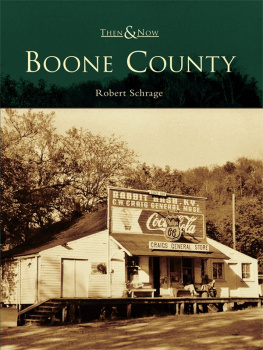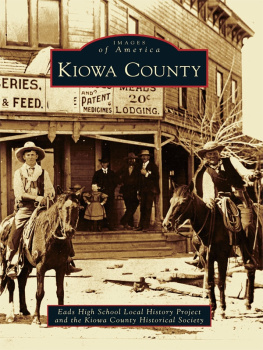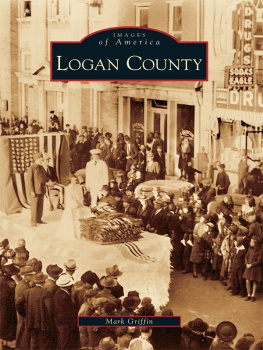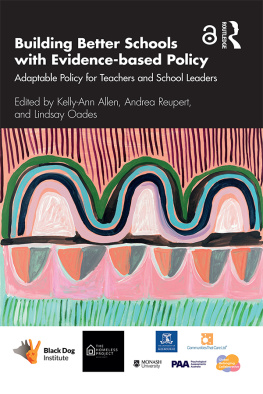The End of Consensus
Published with the assistance of the Z. Smith Reynolds Fund of the
University of North Carolina Press
2015 The University of North Carolina Press
All rights reserved
Designed and set in Arno and Calluna types by Rebecca Evans
Manufactured in the United States of America
The paper in this book meets the guidelines for permanence and durability of
the Committee on Production Guidelines for Book Longevity of the Council on
Library Resources. The University of North Carolina Press has been a member
of the Green Press Initiative since 2003.
Cover illustration: Depositphotos.com/schlag
Library of Congress Cataloging-in-Publication Data
Parcel, Toby L.
The end of consensus : diversity, neighborhoods, and the politics of public
school assignments / Toby L. Parcel and Andrew J. Taylor, The University of
North Carolina, Chapel Hill.1st ed.
pages cm
Includes bibliographical references and index.
ISBN 978-1-4696-2254-5 (pbk : alk. paper)
ISBN 978-1-4696-2255-2 (ebook)
1. Community schoolsNorth CarolinaWake CountyHistory.
2. Community and schoolNorth CarolinaWake CountyHistory. 3. Public
schoolsNorth CarolinaWake CountyHistory. I. Taylor, Andrew J., 1966
II. Title.
LC221.2.N8P37 2015 371.030975655dc23
2014047575
Portions of chapter 7 were adapted with permission from Race, Politics, and
the History of School Assignment Policies in Wake County, NC, in Yesterday,
Today, and Tomorrow: School Desegregation and Resegregation in Charlotte, edited
by Roslyn A. Mickelson, Stephen S. Smith, and Amy Hawn Nelson (Harvard
Education Press, 2015). 2015 President and Fellows of Harvard College.
All rights reserved.
This book was digitally printed.
We dedicate this book to our families, especially to Esther and Hanna Cunha and to Jennifer Taylor.
Contents
A SOCIAL AND POLITICAL HISTORY
WAKE SCHOOLS GENERAL STUDENT ASSIGNMENT POLICY
ANNUAL STUDENT REASSIGNMENTS
YEAR-ROUND SCHOOLS
ELECTION 2009 AND ITS AFTERMATH
Tables and Map
TABLES
3.1 OLS Regression Predicting Views of Diversity and Neighborhood Schools
3.2 OLS Regression Predicting Views of Diversity by Race
4.1 OLS Regression Predicting Challenges, Dangers, and Uncertainty of School Reassignment
4.2 OLS Regression Predicting Challenges, Dangers, and Uncertainty of School Reassignment by Race
5.1 Ordered Logistic Regression Predicting Respondents Rating of WCPSS Year-Round Calendar
5.2 Ordered Logistic Regression Predicting Respondents Rating of WCPSS Year-Round Calendar by Race
6.1 Ordered Logistic Regression Predicting Respondents Rating of WCPSS School Board
7.1 Population Estimates of the Twenty Largest School Districts in the United States
7.2 Fourfold Typology of School Districts
7.3 Comparison of Charlotte-Mecklenburg County and Wake County on Population Characteristics
7.4 Comparison of Charlotte-Mecklenburg County and Wake County on School District Characteristics
A.1 Variable Descriptions, Measurement, Means, and Standard Deviations
A.2 Survey Questions
MAP
Wake County, North Carolina, and Its Environs
Preface and Plan of the Book
Between 1976 and 2009, Wake County, North Carolina, contained a single large and rapidly growing district of schools integrated by race and income or social class. Its students were generally improving their test scores, and it enjoyed a solid reputation. On October 6, 2009, residents in a little over half the county went to the polls to elect school board representatives from their respective districts. By nine oclock that evening, candidates endorsed by the Democrats and who supported a system-wide student diversity policy had lost in all four races to Republican-backed opponents who had campaigned on a platform of returning the county to neighborhood schools and assignment largely by address. Early the next year, a new Republican-affiliated board majority voted to discard a long-standing policy that attempted to ensure each schools students came from a mix of socioeconomic backgrounds.
This change, as well as other actions by the new board, subjected Wake to national and international media attention. During 2010 and 2011 there were articles in the New York Times, the Washington Post, and the Economist and stories on CNN, Fox News Channel, and MSNBC. The boards decisions were ridiculed on Comedy Centrals The Colbert Report. Nineteen protesters were arrested at a July 2010 school board meeting. Chair Ron Margiotta attracted controversy when, at a March 2010 meeting, he called vocal opponents of the majority present in the audience animals (Hui 2010a). Tempers got so frayed on one occasion that a member of the majority derisively called another a prom queen (Hui and Goldsmith 2010). At root was a continually intensifying battle over how the countys children should be assigned to public schools.
Because we are social scientists, these events caught our attention. Parcel studies the role of families and schools in promoting the academic and social well-being of children and adolescents and is particularly concerned with how these institutions invest their social and financial resources in children, decisions that improve academic achievement and social adjustment, factors critical to adult success. Taylor has written about Republican politics and analyzes the political landscape of North Carolina. Both of us understand the central role mass views and behavior play in policy making. Together we began to speculate that those who opposed the districts diversity policy appeared to be reacting against a loss of social capital or valuable social ties and the increasingly frequent reassignments of the countys children from one school to another. We also perceived that the debate had become increasingly politicized, despite a long-standing tradition of bipartisanship and consensus on the Wake school board. We were naturally interested in the importance of race, ideology, and other demographic attributes and political views of the population to these events as well.
By mid-2010 we resolved to pool our expertise and conduct a multi-method study in an attempt to understand more clearly the revolutionary changes in Wake County school politics and policy that had just taken place. We sought guidance from studies of other school districts, both in the South and beyond, particularly those of large urban jurisdictions like Wake. We began scouring media reports and publicly available data relevant to the debate. These initial investigations only increased our curiosity. For one thing, despite the media rhetoric that sharply juxtaposed those who favored diversity with those who desired neighborhood schools, we suspected some Wake citizens might actually appreciate elements of both policies, so that children could attend integrated schools but do so closer to home. We were interested in the dramatic rise of coherent and organized opposition to a school board that had enjoyed significant public support for several decades. And we uncovered some survey data suggesting that Wakes African American community had mixed views of the schools diversity policy. This seemed puzzling. Given the association between race and socioeconomic status, why were African Americans ambivalent about a policy that was designed to help all children, but most immediately many in their own community?








